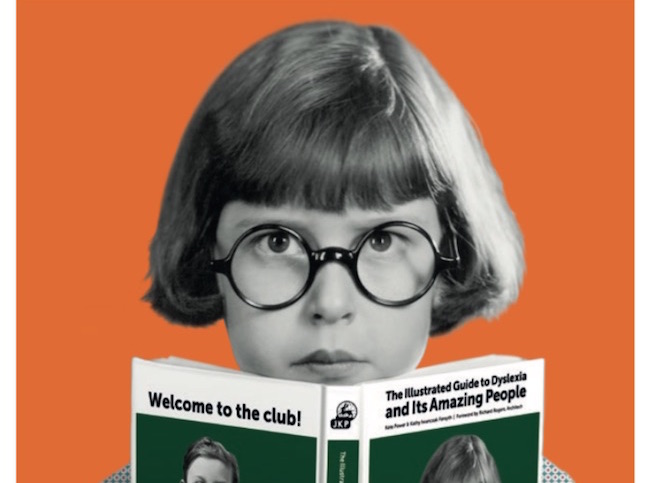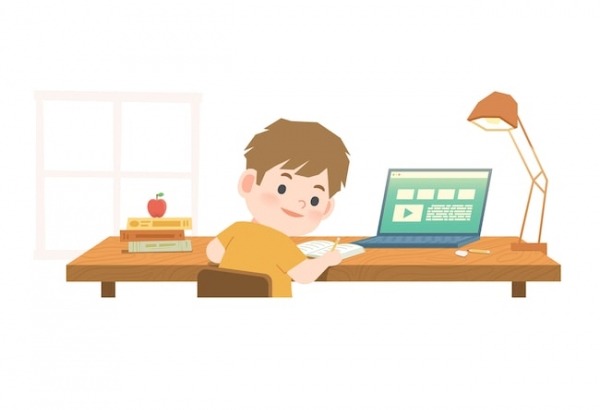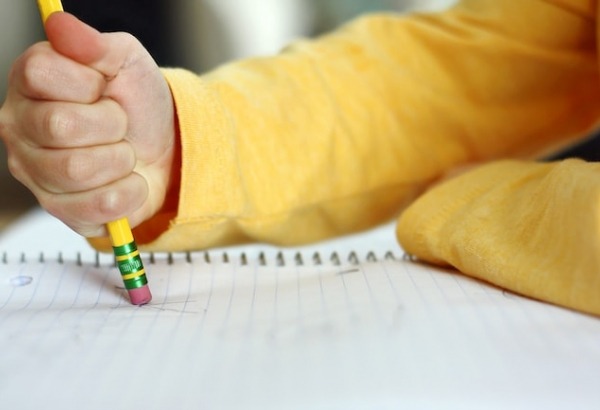My child has dyslexia

A guest post from the authors of ‘The Illustrated Guide to Dyslexia and Its Amazing People'
As parents when we first discovered that our child was dyslexic, we worried for them and their future. We knew the word 'dyslexia' but didn't really understand what it meant for them. Hungry for information on what to do, we went online and bought books on the subject. The next day these books tumbled through the letterbox like bricks.
The references were so full of words, so intense and so serious… so much information to take in. Busy with all that life was throwing at us, we struggled but gradually found the time to read them. As we learned and read about dyslexia, we realized that what we were reading about also described ourselves and half of our own families! This made the dyslexia assessment seem a lot less scary than it had been initially, and a lot closer to home.
A note from TTRS: Kate and Kathy are not alone in this experience. It’s not unusual for dyslexia to run in families. Receiving a dyslexia assessment, whether it comes from the school or a dyslexia specialist, can be just as challenging for parents as it is for children.
Part of the battle is learning how dyslexia affects each child in order to support the child and ensure he or she is not left behind when it comes to developing strong reading and writing skills, confidence in the classroom and a healthy sense of self-worth. To learn more about their book, read our review at the end of this post and visit the link to purchase the guide on Amazon.

Your child is not alone
Remember, while your child may be one of only a few dyslexic students at their school, they are not alone. In fact, they are in very good company!
Richard Rogers, Eddie Izzard, Richard Branson, John Lennon, Anthony Hopkins. The list of famous people with dyslexia is impressive. My kids laugh at me whenever I hear about a successful person doing something amazing in a creative and different way. I always say "I bet they're dyslexic" and they usually are!
Yes, dyslexia has its challenges. Dyslexia is different for everyone and can be mild to severe. But finding out how dyslexia affects the individual can help you put in place the right support and coping strategies for your child. And the sooner the better!
The upside to dyslexia is it has some rather lovely side-effects, so it's not all doom and gloom for learning. A child with dyslexia may be extremely creative and have a great imagination. These children can excel at story-telling, inventing new magical creatures and connecting ideas in an entirely original way. When school projects allow for free thinking and open-ended problem solving, the dyslexic child may surpass his or her peers.
These children are often excellent at seeing the big picture. And while a child’s thoughtful approach to day-to-day events may sometimes be frustrating for parents, it can also make them incredibly proud.

Writing about dyslexia
The three reasons we wrote The Illustrated Guide to Dyslexia and Its Amazing People:
-
The primary reason for writing this book was to help our own children understand how dyslexia affected them, and in the process it helped us to get our heads around it too. We translated the text-heavy academic manuals into pictures, we tried to get to the essence of the issues in 'not too many words' using some humor and charm that both a child and their parents can appreciate.
-
The second reason is because dyslexia is different for everyone and we wanted the reader to be able to personalize their book so that they can really see their own individual recipe for navigating dyslexia. Dyslexia has other challenges too, it’s not only about reading and writing.
-
The third reason was that we had read about all these 'amazing dyslexics' doing 'amazing things' and that there is a positive side to dyslexic thinking. We wanted to inspire our children to give them hope when things are tough and reading is frustrating. As parents, we wanted to help them keep up morale and see that it really is worth all the hard work and effort.
Our light-bulb moments
For Kathy it was sitting at the kitchen table with her seven-year-old daughter. How could it be that one day her child was able to read a 'Biff and Chip' book and the next day she struggled reading the same words? It was baffling and this pattern had been going on for months. There were good days and bad days. On this particular day after going through the same 'Biff and Chip' book they both burst into tears. They were tears of frustration. Why was her daughter not able to progress? Her child worked and tried so hard but the results did not match all the effort. So Kathy went to see her child’s teacher.
Since then, things have been different. While primary school was still a challenge, reading skills really improved when her daughter moved up to secondary school and had access to some very good support. Her child’s teachers also started to nurture and encourage the things she was good at, and then she started to fly! She's about to go off to art college.
For Kathy recognizing dyslexia in their second child was quicker as he had exactly the same struggles as his sister. However, every child is unique and while her daughter tried very hard when it came to reading and school work, he had a much more relaxed approach to learning. He is 12 and wise beyond his years, even encouraging his mom in the writing of this book saying "Don't give up mom. Keep going, it's important!" Our book has helped him understand how dyslexia affects him. Self-knowledge is key and understanding there is a reason for why you find things difficult at school is such a relief - but not an excuse!
For me the first time I thought something was not quite right was when I was doing the nightly reading practice with my daughter. She just could not recognize the word 'the'. Each time she saw 'the' it was like seeing it for the first time, I was exasperated… And probably was not very patient! Which makes me feel guilty now. In retrospect, I realize my irritation would have made her dyslexia worse too. Yet, it is hard for parents, particularly before an assessment.
After doing her homework, me giving her an apology and us having a nice cuddle, she drew me a picture. At aged 7 she drew an incredibly detailed picture of a friend she had seen earlier that day. It was so detailed and accurate, from showing the buttons on her dress to the patterns on her socks. How could she remember details like that and not recognize three little letters in the word 'the'? Something was not right.

The next day I called my Auntie who was a dyslexia specialist. We got her professionally assessed, and then the right help was put in place early on. I realize how lucky we were to have my family’s support and my aunt’s expert guidance. She encouraged me to relentlessly push the school and fight for what my child was entitled to. My daughter did struggle at primary school but has thrived academically since starting secondary school. She has steadily moved up the sets and this is down to her effort and perseverance.
Recognizing dyslexia in my son was easier as I had already read a lot about dyslexia, and was aware that he had never crawled (sofa surfed instead) and was a late talker, both signs he could be dyslexic. After nagging the school he was finally assessed at 7 years old. We found he had a verbal vocabulary of an 11 year-old but the short-term memory of a 5 year–old!
This did not help him when it came to remembering instructions but was great for after dinner anecdotes! He always tries hard but does get fed up with reading and writing, especially when he is trying to get his thoughts onto paper. His handwriting is also hard to read.
For this reason it was important for him to learn touch-typing and one of the reasons why we purchased the Touch-type Read and Spell program. He has been doing TTRS since his fingers were big enough to use the keyboard and luckily he loves it and computers! I have a feeling that touch-typing and assisted technologies will be really important for his future.
Incidentally, my non-dyslexic son also uses the TTRS program and it has really helped him with his spelling skills, and of course mastering touch-typing.
As a parent how can I help my dyslexic child?
An important role for parents is keeping up the child's self-esteem. Make sure they are inspired and stay positive so they don't feel like giving up. Navigating dyslexia in a traditional school classroom requires hard work and tenacity – and often a lot of repetition.
The other important thing is to try and help your child find his or her 'thing'. Find something they enjoy, something that interests them and that they are good at. Sometimes it is obvious and sometimes you have to dig it out.
For Kathy’s daughter it has always been being creative. She could typically be found at the kitchen table drawing, making or baking something. And once she found iMovie on her iPad, she was totally inspired. It caught her imagination and she started making mini movies and music videos. She has definitely got a talent for moving image, mixing visuals and music. It will be interesting to see where she takes it.
For Kathy's son, he is a multi-award winning gold medallist gymnast - a thrill seeker – and a budding stunt man perhaps?
For my daughter, from an early age she loved making clothes and working with fabric. She was about 8 when she made me a dress for my birthday! She's never happier than when she's on her sewing machine, working intuitively on a mannequin rather than using a pattern.
For my son he's a people person and funny. He has a wonderful turn of phrase and makes people laugh.
They are all wonderful children and have lots to look forward to, and may all end up having careers using different skills - it's up to them. We just want them to be happy and confident in their abilities.
Book Review: The Illustrated Guide to Dyslexia
Dyslexia is a specific learning difficulty that affects 1 in 10 children. Kids with dyslexia do not have a disability, nor are they less intelligent than their peers, they simply process information in a different way. No two dyslexic children will experience the same set or severity of symptoms.
Researching and learning about dyslexia can be an overwhelming task for parents. This is complicated further by the density of most articles and books that discuss it. It tends to run in families and sometimes parents of a dyslexic child may also struggle with dyslexia themselves. That’s why the authors of this week’s blog decided to put together an illustrated guide, to make it easier for everyone in the family to learn about dyslexia.
Their book is an encouraging breath of fresh air that touches on the strengths associated with dyslexia, as well as the struggles. A dyslexic child’s journey through school is about persisting in the face of challenge, finding the right accommodations and strategies and staying motivated. With this guide at your fingertips, you can help support your child as they navigate the sometimes bumpy road ahead and come to a better understanding of their own dyslexia. Order it on Amazon today!
Find out more and follow Kathy Forsyth and Kate Power on Facebook, Instagram and Twitter at @amazingdyslexic.
For learners who struggle with dyslexia
TTRS is a program designed to get children and adults with dyslexia touch-typing, with additional support for reading and spelling.
Chris Freeman
TTRS has a solution for you
An award-winning, multi-sensory course that teaches typing, reading and spelling

How does TTRS work?
Developed in line with language and education research
Teaches typing using a multi-sensory approach
The course is modular in design and easy to navigate
Includes school and personal interest subjects
Positive feedback and positive reinforcement
Reporting features help you monitor usage and progress













